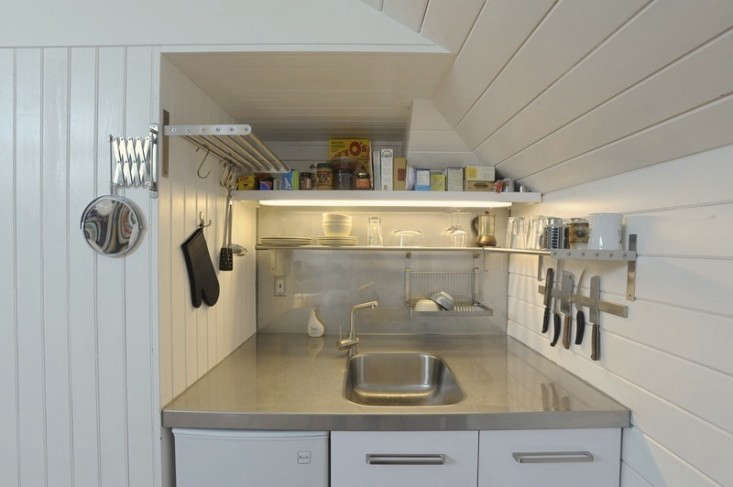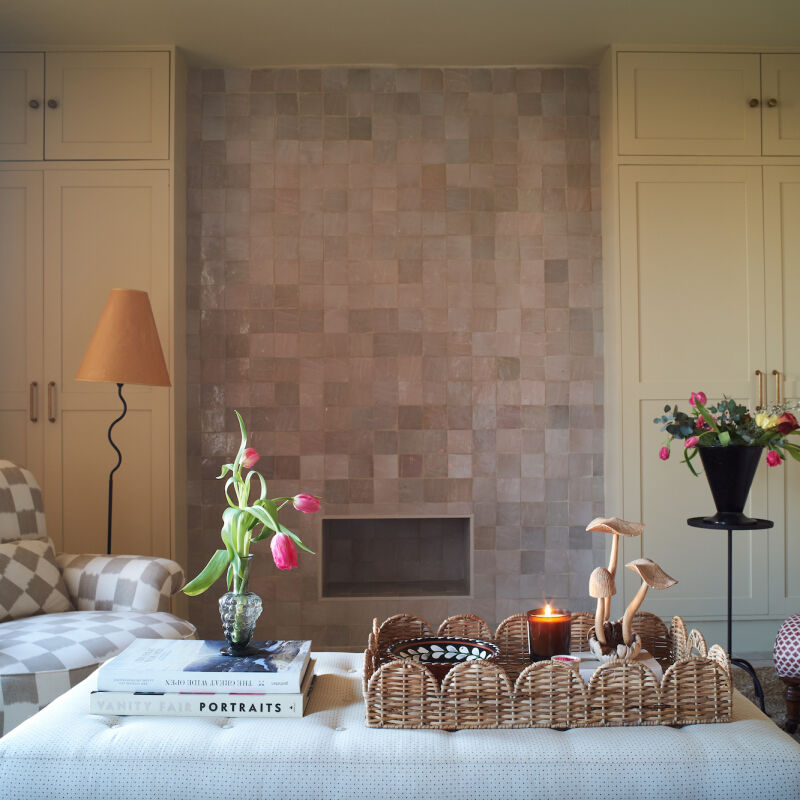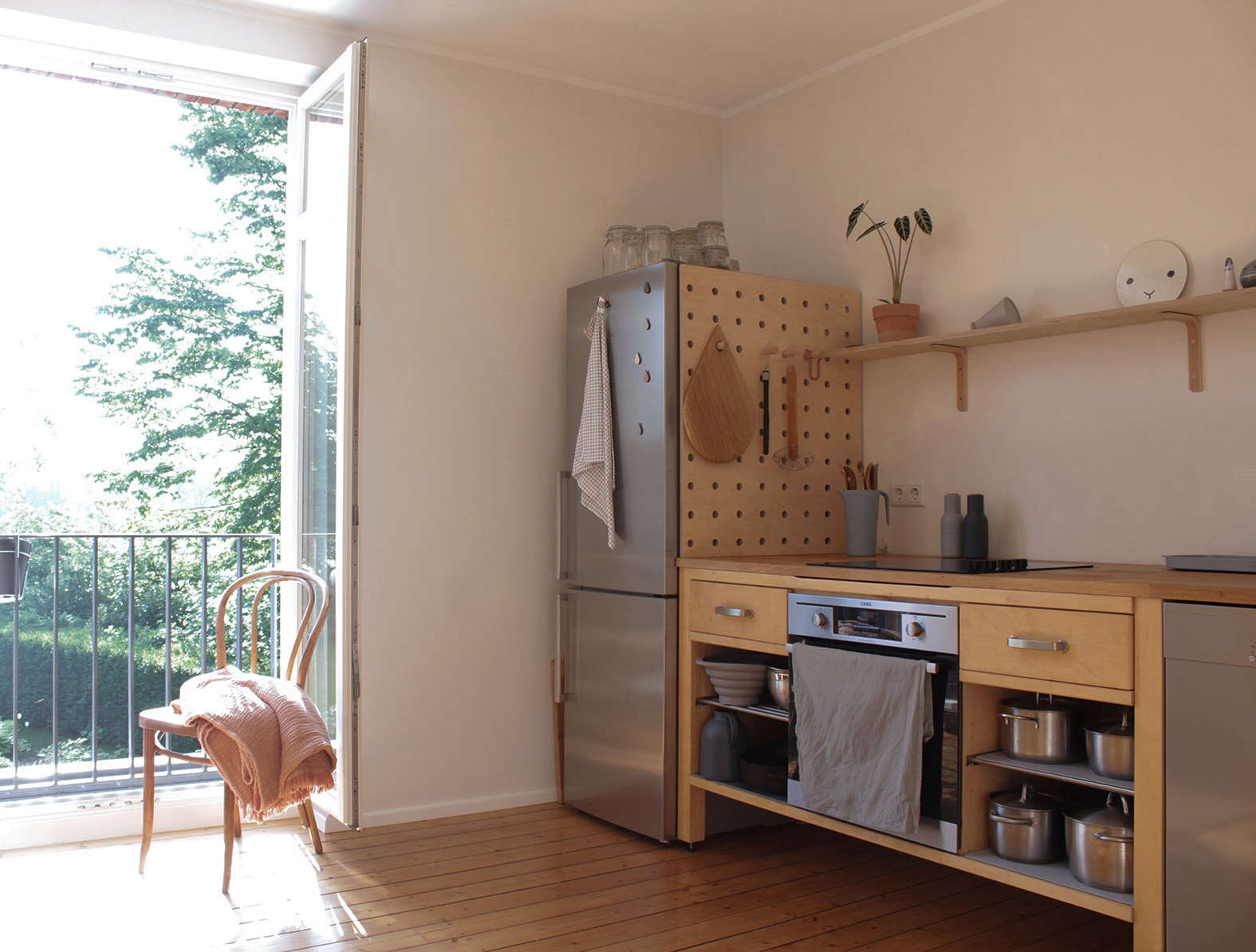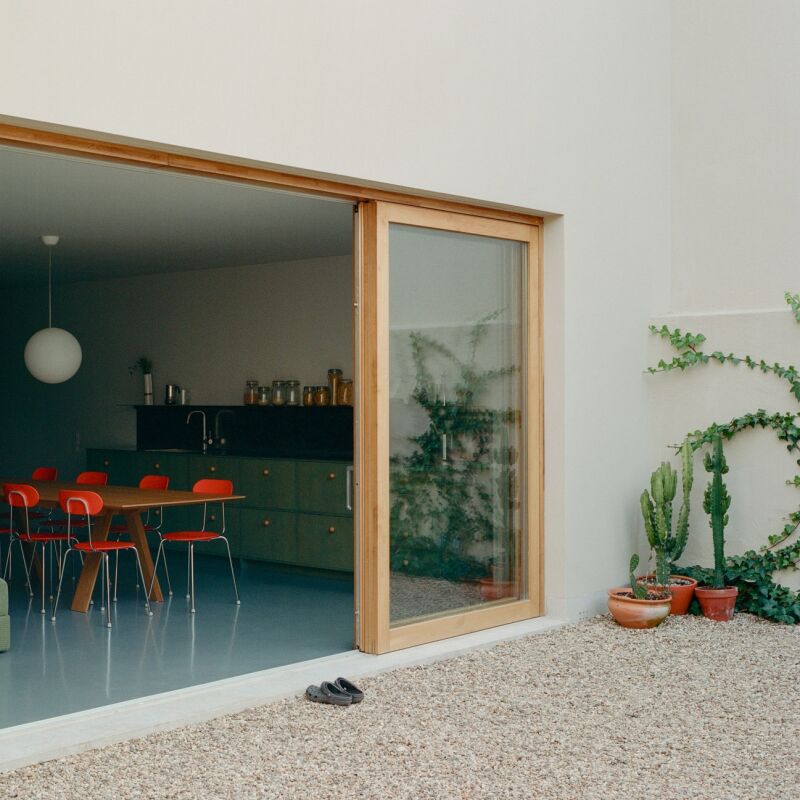After graduating from UC Berkeley with a BA in architecture, Christi Azevedo started her career fabricating limited-edition wood and steel furniture. Over the years, her focus evolved into an architecture practice known for its refined industrial aesthetic. Her hands-on knowledge of fabrication, construction, and materials is on display in her renovation of a dilapidated, 360-square-foot 1908 carriage house in Oakland, California.
Saving as much of the original structure as possible, Azevado used low-budget materials and did most of the work herself with the help of her electrician brother, Craig, and friend Henry DeFauw, an architectural metal fabricator. In the interior, Azevedo retained the original fir flooring and used translucent glass, white paint, and sliding doors to create a sense of space.
To see the Before images of the project, visit Dwell magazine. Photos by Susanne Friedrich and Henry DeFauw, courtesy of Christi Azevedo.

Above: The exterior of the finished project features a copper downspout, new exterior lighting, and a staircase that Azevedo fabricated from galvanized steel and reclaimed wood treads. The exterior is painted Ruskin Bronze by Kelly-Moore.

Above: The dining area has a tiny kitchen tucked in the corner.

Above: The kitchen incorporates steel shelving and accessories from Ikea as well as a custom steel countertop and sink; the under-counter refrigerator is by Avanti.

Above: The translucent glass to the right of the entry conceals the shower

Above: One wall of the bathroom is clad in wood reclaimed from the basement of the main house. The toilet is Toto’s Dual Flush Aquia. Henry DeFauw made the toilet paper holder (as well as some of the other hardware). Visit DeFauw Design and Fabrication to see more of his work.

Above; Azevedo used translucent glass to create an architectural (and very visible) shower.

Above: Interior walls are clad in V-groove siding from Home Depot, “a low-grade pine with knots that costs about 70 cents per linear foot,” according to Azevedo. “We did some filling and sanding before the final coat to refine the look. The key is to use white oil-based paint.”

Above L: An open mudroom is situated just off the small entryway. Above R: An unexpected detail: a pair of toggle switches, one white, one black.

Above: Azevedo’s fabrication skills are evident in the steel and reclaimed wood crates she made as under-shelf storage for the project. “They’re an interpretation of some bolt bins I saw on a friend’s 1940s ferry boat,” she says.
For more ideas, have a look at our Small Space Living posts, including a Garage Turned Studio Apartment (and a second standout example on Gardenista). Also don’t miss Erin’s Expert Advice: 10 Tips for Living in 240 Square Feet.
Browse our Photo Gallery of rooms and spaces for remodeling inspiration.
N.B.: This post is an update; the original story ran on September 13, 2010.




Have a Question or Comment About This Post?
Join the conversation (19)